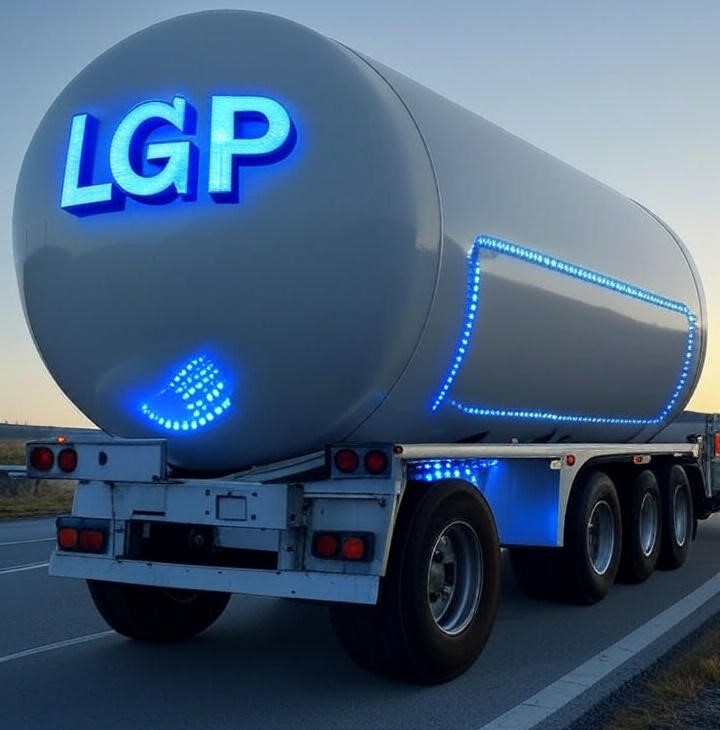Liquefied petroleum gas (LPG) is a versatile and powerful fuel source that plays a vital role in residential, commercial, and industrial sectors worldwide. With increasing attention to cleaner energy alternatives, LPG offers an efficient and eco-friendlier option compared to traditional fossil fuels. In this article, we dive deep into everything you need to know about LPG — from its composition, production, and uses, to its advantages and safety considerations. By the end, you'll understand why LPG continues to be a key player in global energy markets.
Introduction to Liquefied Petroleum Gas (LPG)
Liquefied petroleum gas (LPG) is a flammable mixture primarily composed of propane and butane. Stored under moderate pressure in liquid form, LPG becomes a compact and transportable fuel ideal for multiple uses. This power-packed energy source burns cleanly, emits fewer pollutants, and provides a cost-effective fuel option across the globe. Whether for heating your home, fueling vehicles, or powering industries, LPG remains indispensable. Let’s unpack what makes LPG such a preferred energy solution.
Composition and Types of LPG
Understanding LPG starts with knowing its primary components. Typically, LPG is a blend of hydrocarbons, mainly propane (C3H8) and butane (C4H10). The ratio varies based on climatic conditions and intended use, as each gas behaves differently under temperature and pressure.
Propane
Propane is widely used in colder climates because it vaporizes easily even at low temperatures. It is highly efficient for heating and cooking, making it a favorite for residential and commercial applications.
Butane
Butane is more suitable for warmer climates due to its higher boiling point. It's commonly used in portable stoves and lighters. In some regions, LPG contains a higher percentage of butane to optimize fuel performance, making it a competitive alternative to traditional fuel oil in certain applications.
How Liquefied Petroleum Gas (LPG) is Produced
LPG is mainly derived during two processes:
- Refining crude oil: LPG is captured as a by-product during the distillation of crude oil, alongside other fuels such as gas oil, which are separated based on their boiling points.
- Natural gas processing: LPG is extracted from raw natural gas streams.
- After extraction, the gas is compressed and cooled, turning it into liquid for efficient storage and transport.
- Along with LPG and gas oil, petroleum coke—a carbon-rich solid residue produced during crude oil refining—is another important by-product with significant industrial applications.
Major Applications of LPG
LPG’s versatility is evident through its widespread applications, spanning residential, industrial, and automotive fields.
Residential Use
LPG is extensively used for cooking, heating water, and space heating in homes. It offers a cleaner alternative to traditional fuels like coal or wood, ensuring safer indoor air quality.
Industrial Use
In industries, LPG fuels furnaces, boilers, and cutting torches. Its clean-burning property helps maintain product quality while reducing emissions.
Automotive Use
LPG as an automotive fuel (often called autogas) is gaining popularity due to lower emissions and cost savings compared to gasoline, diesel, or even automotive gas oil in some regions.

Advantages of Using LPG Over Other Fuels
LPG holds several compelling advantages:
Cost-efficiency: Lower fuel costs and easy storage reduce operational expenses.
Environmental benefits: LPG emits fewer greenhouse gases and pollutants.
High nergy content: Offers more heat per unit weight compared to other fossil fuels.
Portability: Easy to transport and store in tanks or cylinders.
Safety Measures and Handling of LPG
- Handling LPG requires strict safety protocols due to its flammability. Proper storage and transport minimize risks of leaks or explosions.
Storage Safety
- Use certified cylinders or tanks.
- Store in well-ventilated, shaded areas away from ignition sources.
Transportation Safety
- Follow regulations for pressure containers.
- Regularly inspect for leaks or damage.
Environmental Impact of Liquefied Petroleum Gas (LPG)
Compared to coal, gasoline, or diesel, LPG burns cleaner with significantly less carbon dioxide, sulfur dioxide, and particulate emissions. This makes LPG an environmentally friendlier fuel choice, contributing less to air pollution and climate change.
Economic Importance of LPG
Globally, LPG markets have grown steadily, driven by expanding demand in emerging economies. Its affordability and adaptability make it a critical energy source in both developed and developing countries, supporting economic development and energy security.
Challenges and Limitations of LPG Usage
Despite its benefits, LPG faces challenges:
- Supply chain constraints affecting availability.
- Regulatory hurdles regarding storage and transport.
- Competition from renewable energy sources.
- Infrastructure limitations in some regions.
Future Trends and Innovations in LPG
The LPG industry is evolving with innovations such as:
- Development of LPG-fueled hybrid vehicles.
- Enhanced storage technologies for better safety.
- Integration with renewable energy systems.
- Global push towards cleaner fuels highlighting LPG’s role.
Conclusion
Liquefied petroleum gas (LPG) remains a vital energy source across the globe due to its efficiency, versatility, and relatively cleaner combustion. Whether in homes, industries, or vehicles, LPG offers a cost-effective and environmentally preferable alternative to many traditional fuels. By understanding its properties, safe handling, and future potential, users and stakeholders can maximize LPG’s benefits while navigating its challenges. As the world moves toward greener energy solutions, LPG’s role is poised to grow, blending tradition with innovation.
